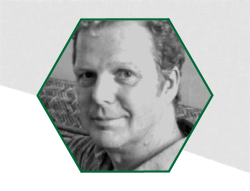This paper provides quantitative information about the paths taken by powder particles which do not enter the laser generated melt pool during laser cladding (DED). These wasted powder particles bounce off the melt pool and the surrounding solid areas. This wastage reduces the productivity of the process. In this paper specially developed software was used to analyze High Speed Imaging videos of the cladding process, to monitor the directions of powder particle flight away from the melt pool area. This information has been correlated to the geometry of the melt pool zone for three different cladding techniques; single track cladding (A tracks), standard overlapping track cladding (AAA cladding) and a recently developed technique called ABA cladding. The results show that the melt pool geometry has a strong influence on powder catchment efficiency and the trajectories of powder particles which bounce away from the laser-material interaction area. ABA cladding was found to have considerably better powder catchment efficiency than standard AAA cladding and this improvement can explained by consideration of the geometries of the melt pools and surrounding solid material in each case. As powder costs are an important factor in industrial laser cladding, the adaption of the ABA technique could have a beneficial effect on the profitability of the process
Keywords
- Aba Laser Cladding
- High Speed Imaging
- Laser Direct Energy Deposition
- Powder Catchment Efficiency
- Productivity

